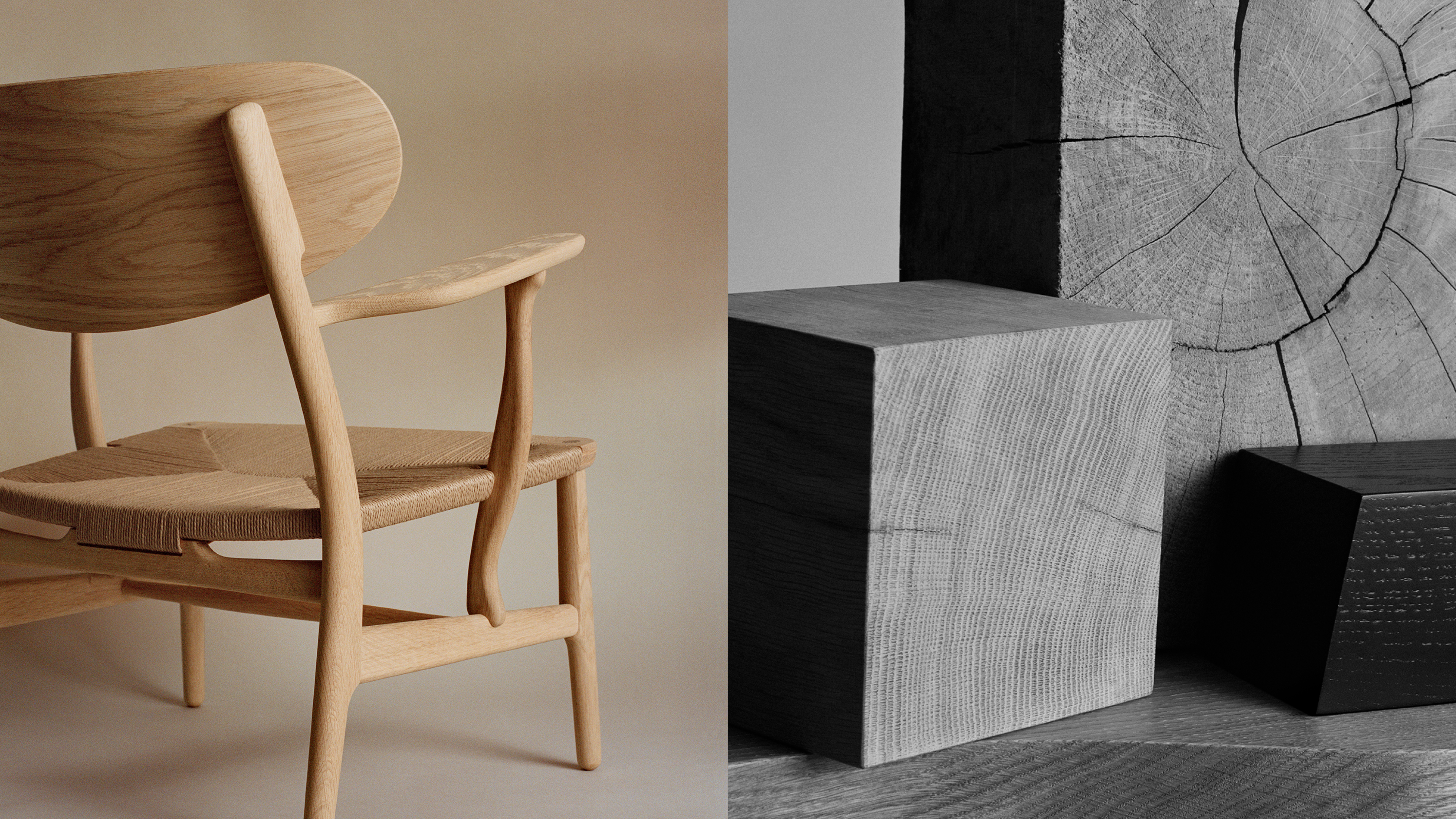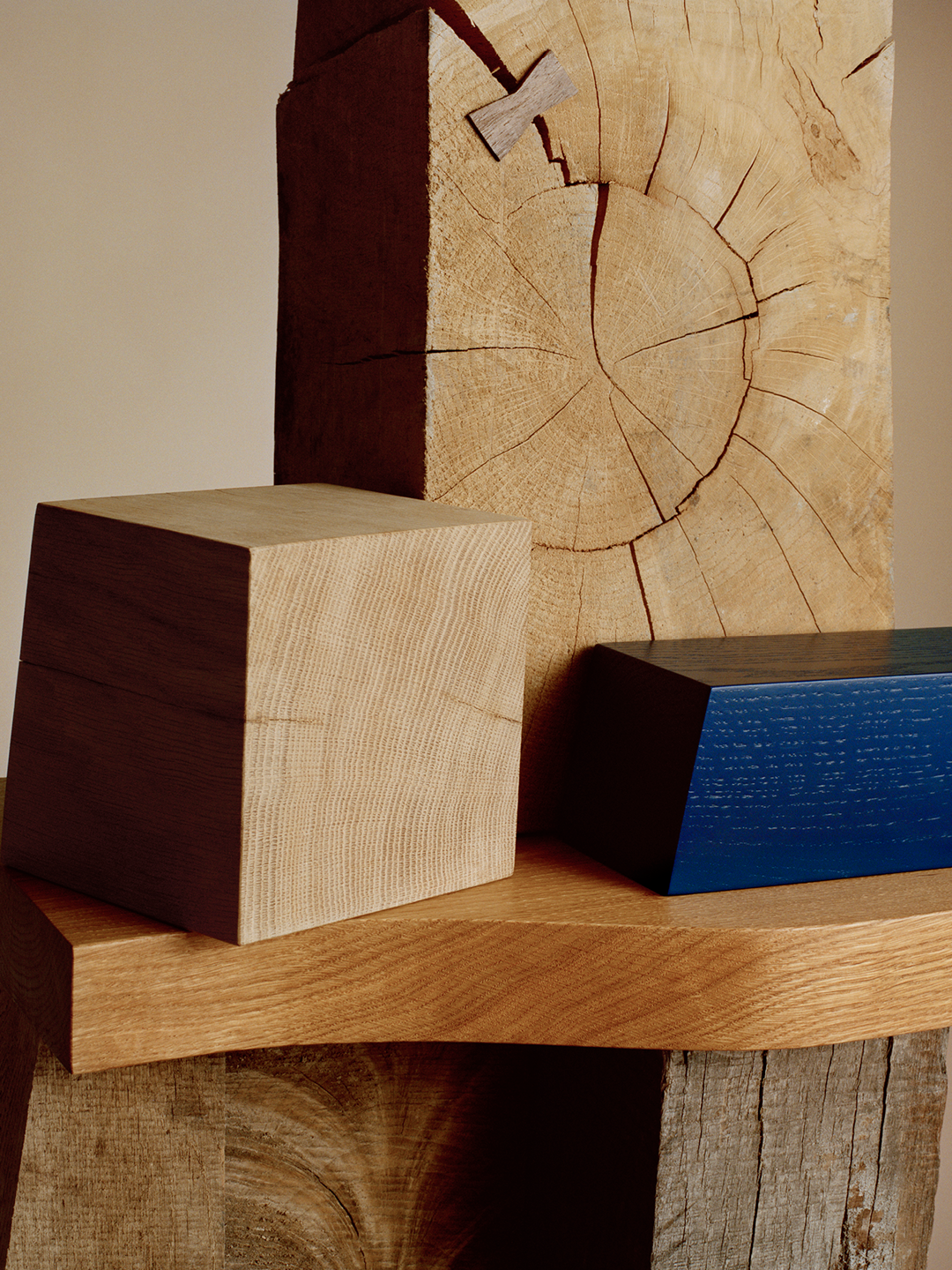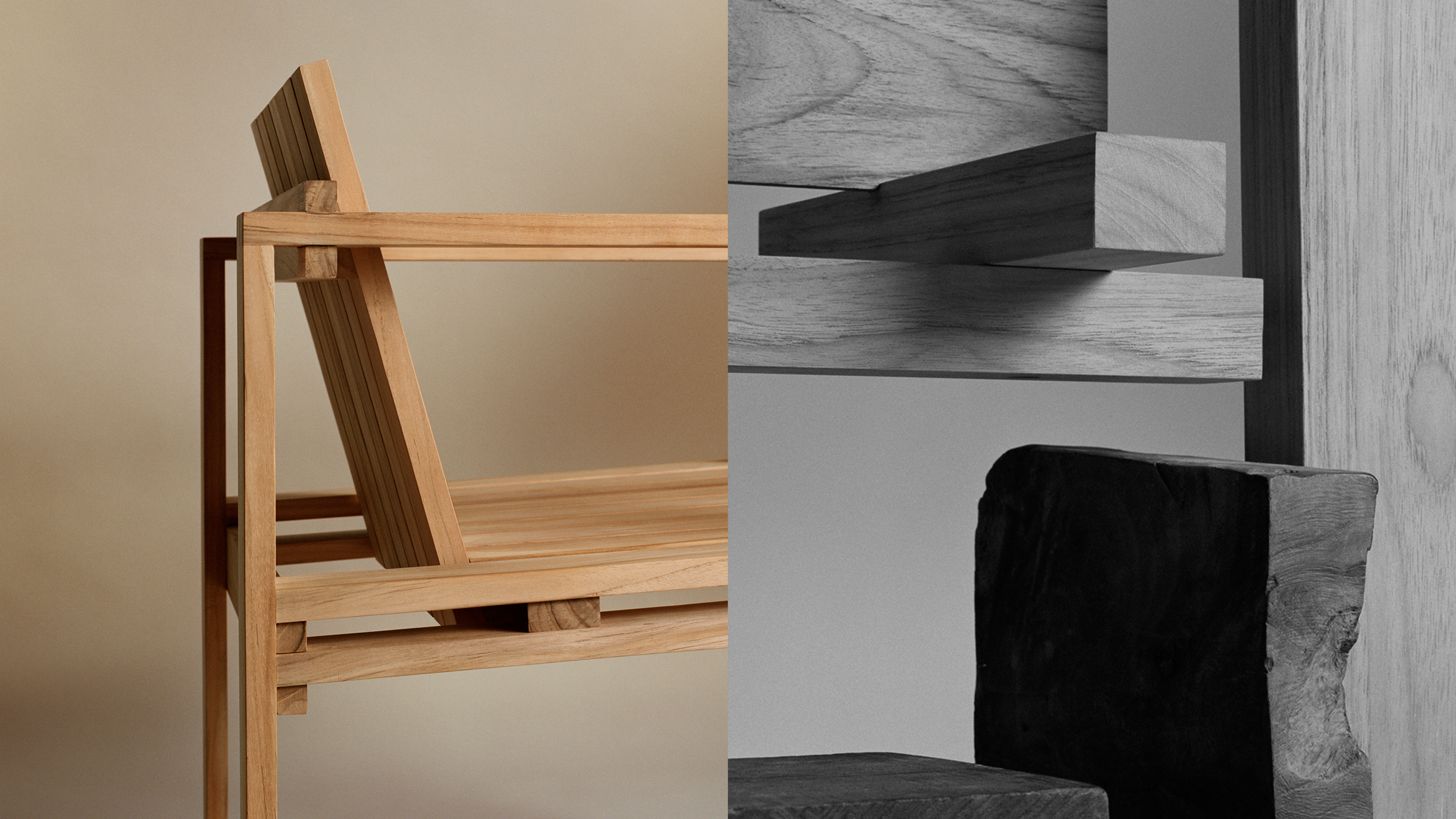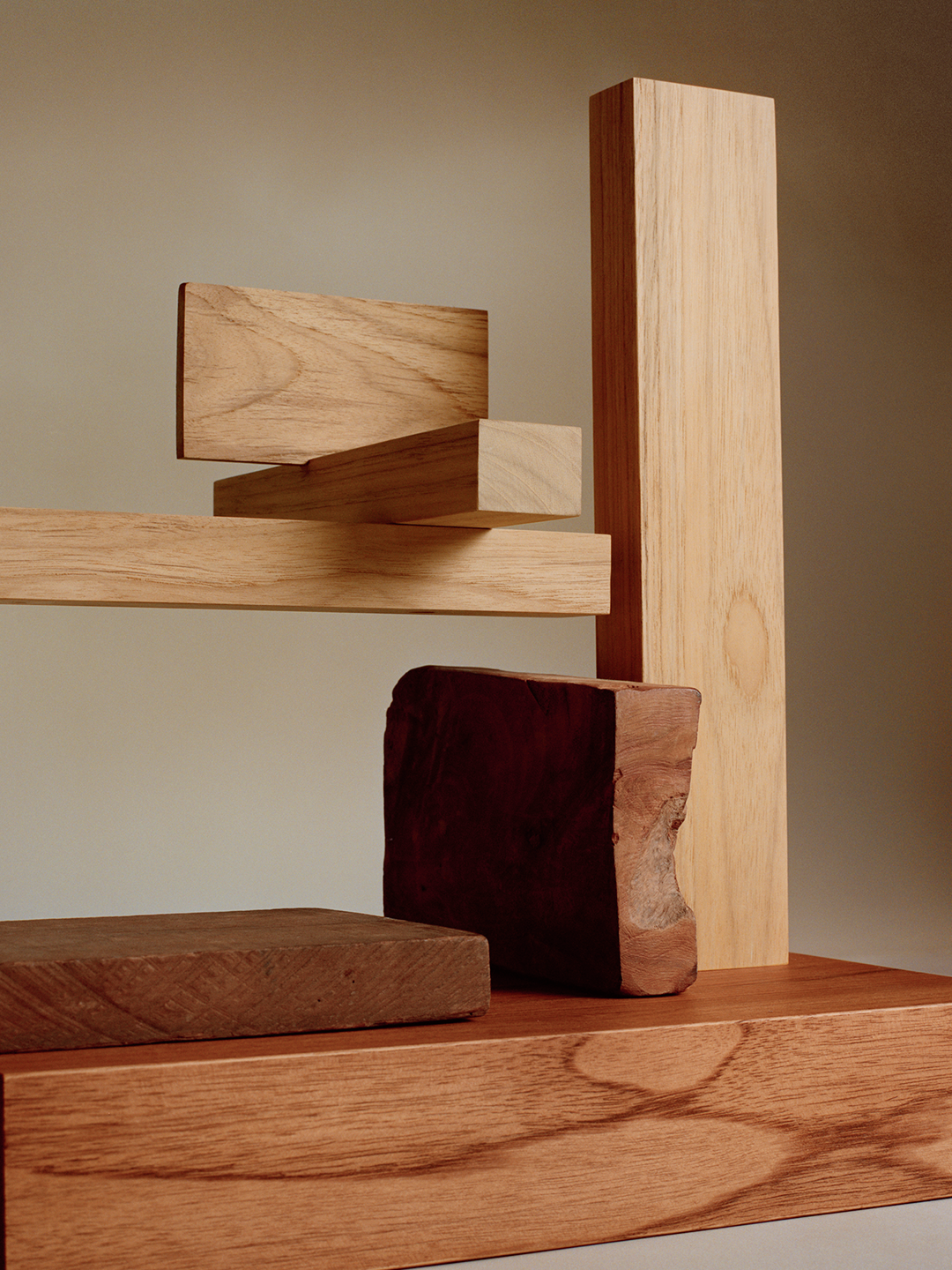Oak
Durable and hard-wearing, oak’s natural strength is complemented by a strong grain pattern.

Beloved for its durability, oak has long been a staple of Scandinavian design. Its enduring popularity over the centuries means it has become synonymous with quality, longevity, and traditional craftsmanship. In Hans J. Wegner’s designs, the ‘Great Oak’ was used even on the inner parts of veneer furniture to enhance the sense of a solid wood piece – a thoughtful touch that we have continued in our production today.
Found across Europe, North America, and Asia, this hardwood species includes more than 600 varieties worldwide, with some oak trees reaching 35 meters in height. Easily recognizable for its lively appearance and strong grain pattern, oak’s high content of tannic acid results in an exceptionally tough wood ideally suited to furniture-making.

At Carl Hansen & Søn, we work primarily with FSC-certified oak from responsible suppliers. Working solely with the heartwood, the strongest and most durable part of the tree, we carefully sort through every plank to make sure the wood matches our furniture. All of our oak is surface treated – with soap, lacquer, oil, white oil, or water-based paints – to ensure added resilience and a beautiful appearance. Even when treated, oak’s distinctive grain pattern remains visible – and over time, its colour will gradually evolve into a warm yellowish-brown tone.
Qualities in furniture production
Oak is very durable and hard-wearing due to its high content of tannic acid among other things.
Origin
Oak grows naturally throughout Europe, North America and Asia.
Carl Hansen & Søn only uses FSC-certified (FSC-C135991) oak from responsible partners.
Growth & size
An oak tree can grow up to 35 metres in height and 3 metres in diameter.
Hardness
Oak is a hardwood species.
The weight of the wood may vary, but the mean weight is approximately 650 kg/m³.
Appearance
At Carl Hansen & Søn, we only use the heartwood of oak.
Oak wood has a brownish colour in an untreated condition.
Oak wood has a lively appearance with a strong grain pattern as the pores in the earlywood are coarse vessel cells that are visible on the longitudinal section surfaces, while latewood consists of thick-walled wood with small cavities. This variation helps to shape the appearance and structure of the wood.
Small knots are hard to avoid in oak. At Carl Hansen & Søn, we prioritise the careful sorting of all our wood – wood that is uneven or exhibits colour difference is surface-treated and the most solid-coloured wood is treated with oil or soap.
Surface treatment
At Carl Hansen & Søn, we surface-treat oak with soap, lacquer, oil, white oil, smoke oil and water-based paints.
Surface-treating the wood ensures a beautiful surface, additional durability and easy cleaning.
With oak, the wood structure is visible under the paint due to the open cell structure of the wood.
Since the colour of the wood ages with exposure to light, its appearance changes over time. Oak will eventually acquire a yellowish-brown tone.


Highly resistant to weather and water damage, teak unites premium quality with a polished appearance.